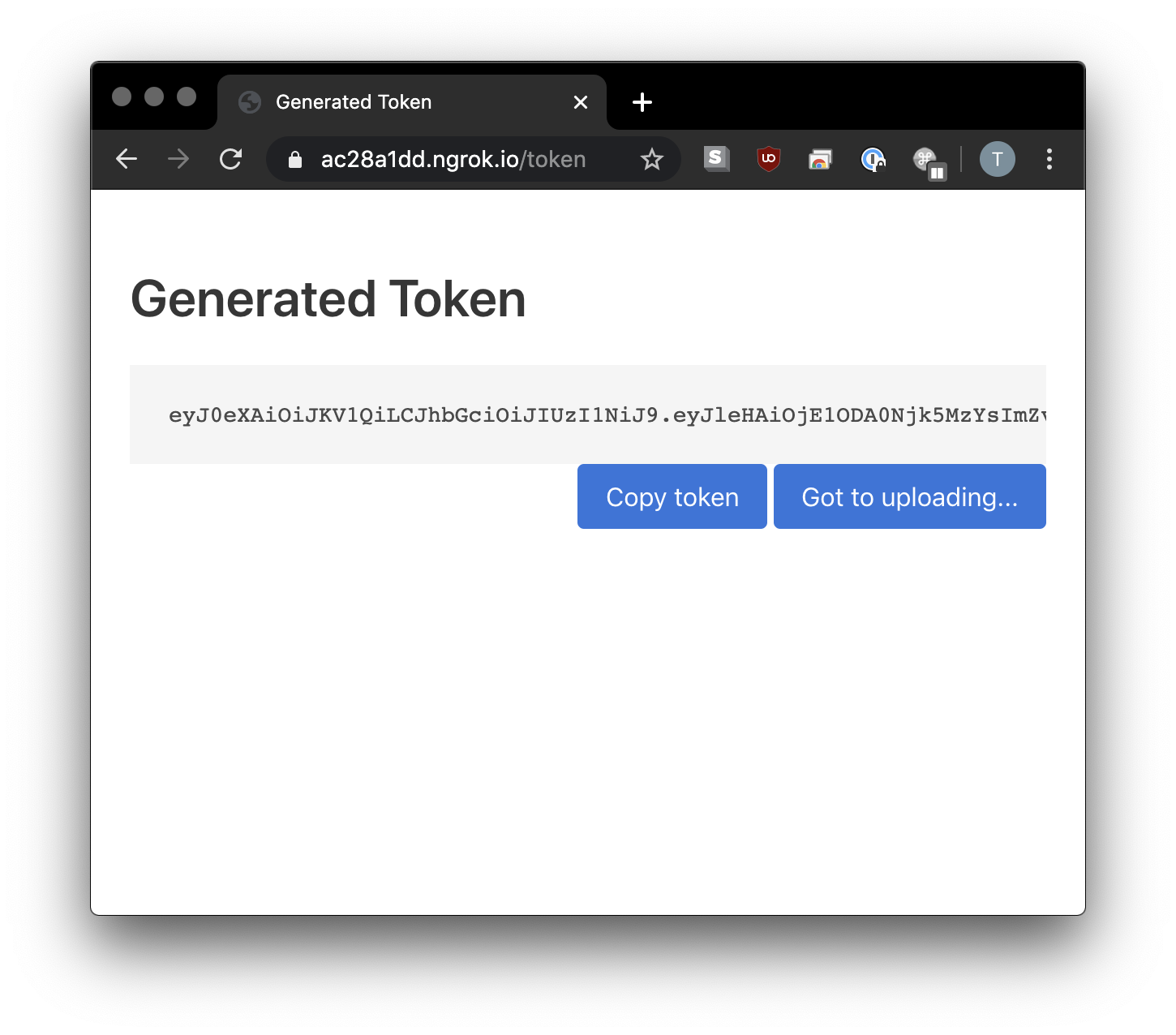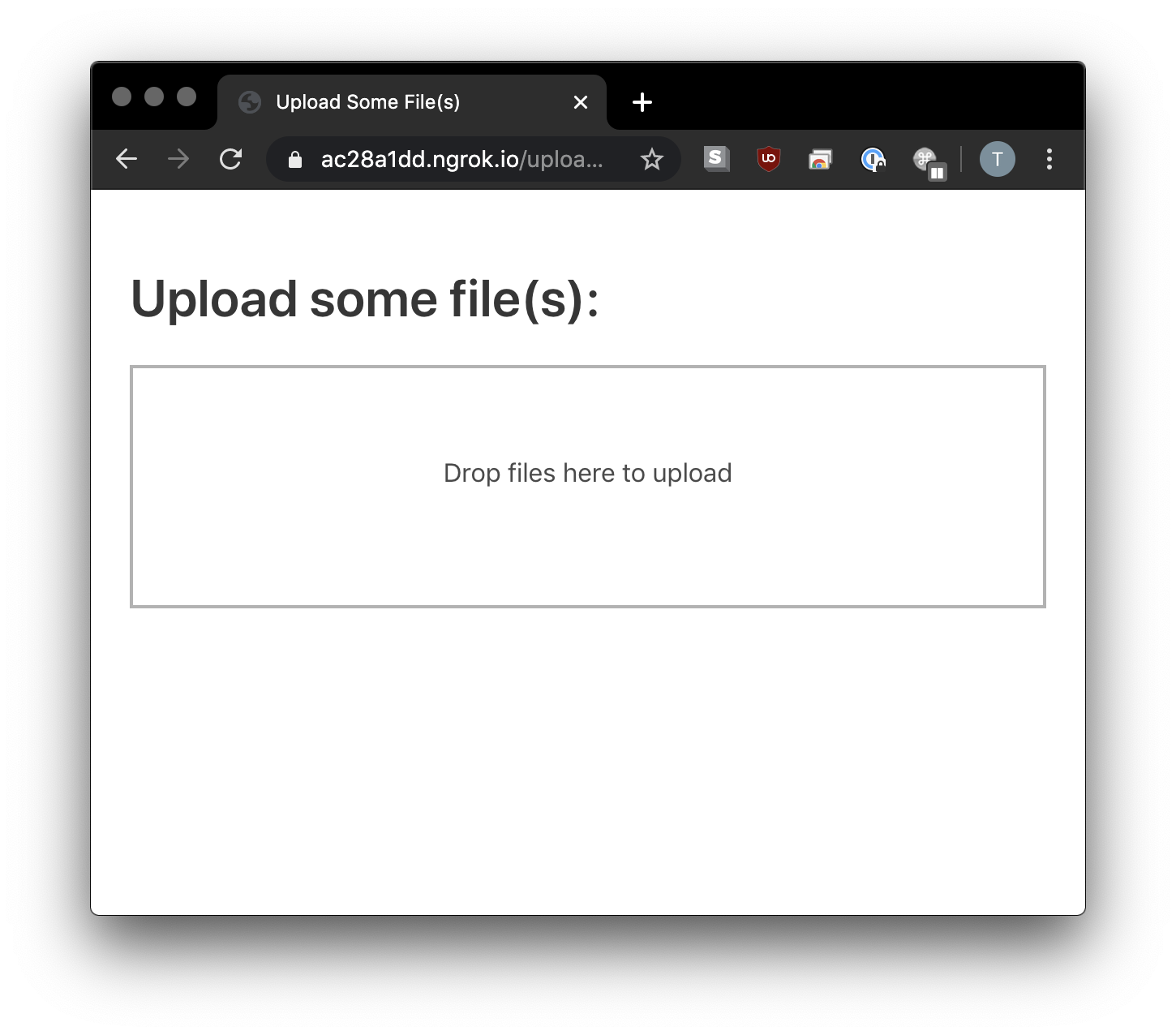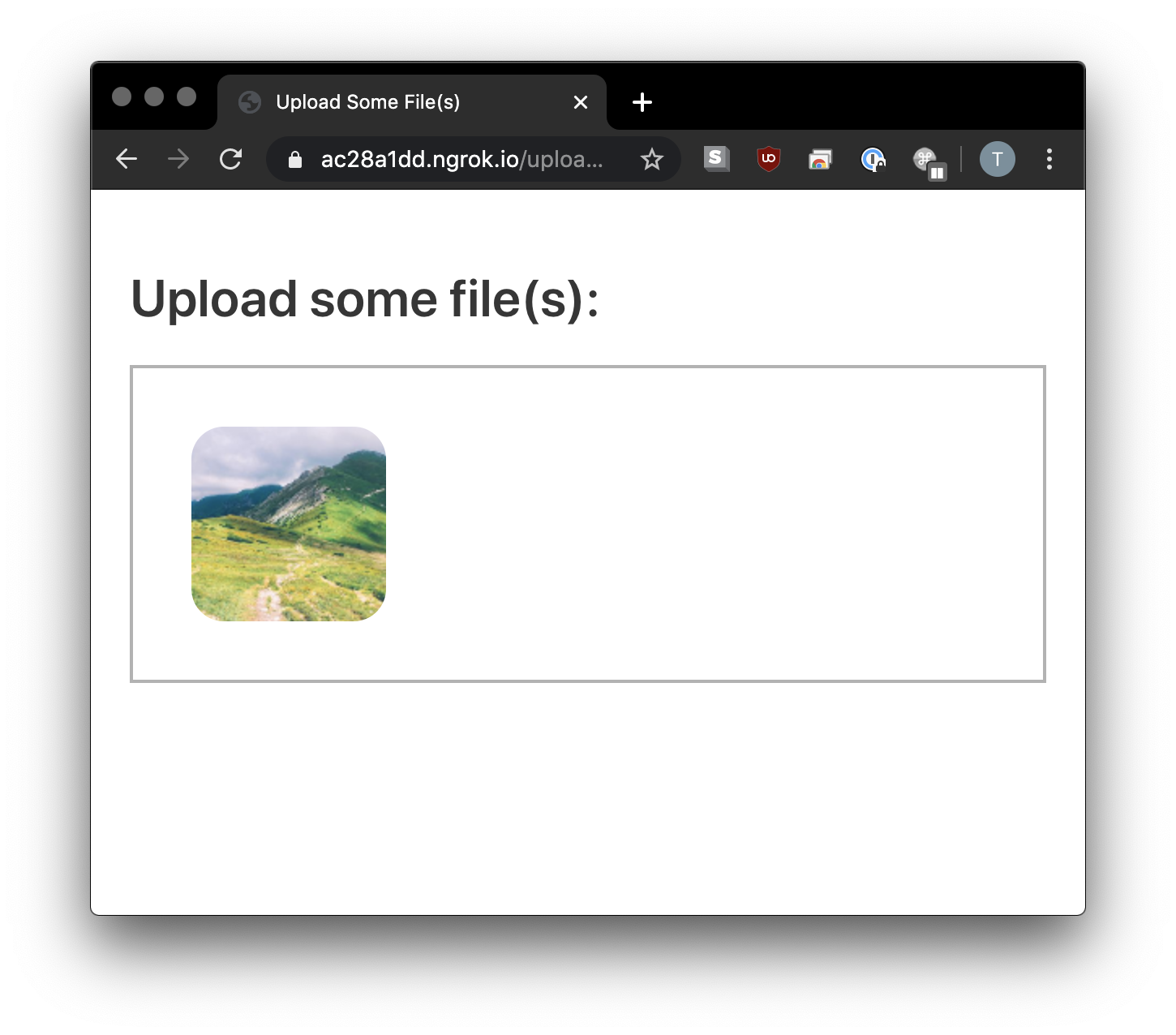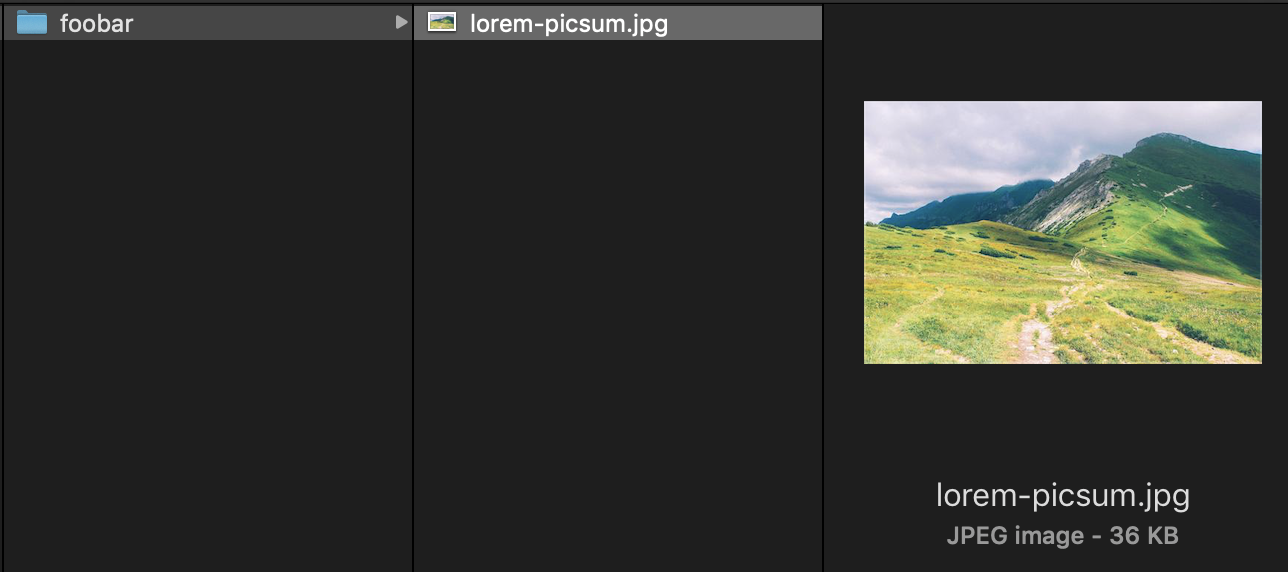Take control of files send to you. Start a web-server, provide (JWT) tokens for authorized uploaders, store uploaded files locally, on GCS, ... .
As admin, create a new token by:
- going to
/token - providing your admin secret
- specifying the time for the token to be valid, e.g. 3600 sec is one hour
- specifying the subfolder uploads will be stored in
You will be redirected to the token page - you can either copy the token or go directly to the upload page:
This is the token you provide to users. It will be valid for the specified time only and all uploads will be put into the specified subfolder.
As a user, you will get the token and go to the root path /:
When clicking Go to uploading..., you will be directed to the uploading page:
(You can also give away the upload url with the token in the query path: /upload?token=GRIcil.... and create a shortcut url with some url shortener, e.g. bitly.com.)
The drag and drop interface used is dropzonejs. Drag and drop and file selection should both work as expected:
Afterwards the file(s) should be in the specified folder:
The service is configured via environment variables.
UPLDR_JWT_SECRET: Some random string used for signing the JWT secret.UPLDR_ADMIN_SECRET: When creating a token for uploading, the admin will need the password specified here.UPLDR_LOCAL_PATH: A path to a local folder. Uploads will be stored here.UPLDR_GCS_PATH: A google cloud storage path (i.e.gs://bucket-name/path/to/some/folder). Uploads will be stored here.
Note: Only set one of the following environment variables:
UPLDR_LOCAL_PATHUPLDR_GCS_PATH
With docker:
» docker run -it --rm --name uploader -p 127.0.0.1:8000:80 \
-e UPLDR_JWT_SECRET \
-e UPLDR_ADMIN_SECRET \
-e UPLDR_LOCAL_PATH \
-e UPLDR_GCS_PATH \
tammoippen/uploader:latestFor development, you first have to install the dependencies:
» git clone https://github.com/tammoippen/uploader.git
» cd uploader
» poetry install
# if you want to use GCS, install with `-E gcs`
» poetry install -E gcs
» poetry shell
# set your environment variables for configuration
# start the service
» uvicorn uploader:app --reloadStart the service with docker:
docker run -it --rm --name uploader -p 127.0.0.1:8000:80 \
-e UPLDR_JWT_SECRET=some-random-data \
-e UPLDR_ADMIN_SECRET=your-password-for-creating-tokens \
-e UPLDR_LOCAL_PATH=/path/to/your/upload/folder \
tammoippen/uploader:latestUse ngrok.com to create a temprary url for accessing the locally running
uploader service:
» ngrok http 8000You get a url like https://ac28a1dd.ngrok.io to connect to your service.
Set the environment variable UPLDR_GCS_PATH to a GCS path you have access to. Make sure your service
does have access to the bucket as well (see GC Authentication).
Then start the web-service accordingly.
- dropzone js for the drag and drop interface.
- pyjwt for the jwt implementation.
- fastapi and dependencies for the webserver.





